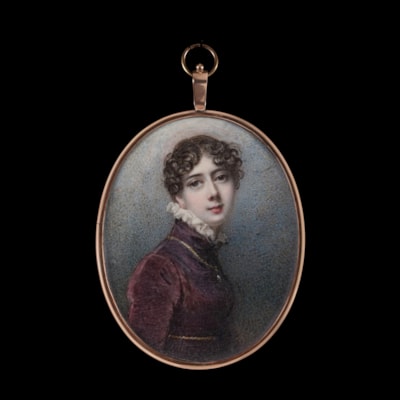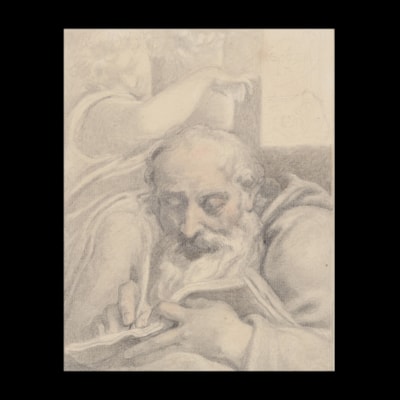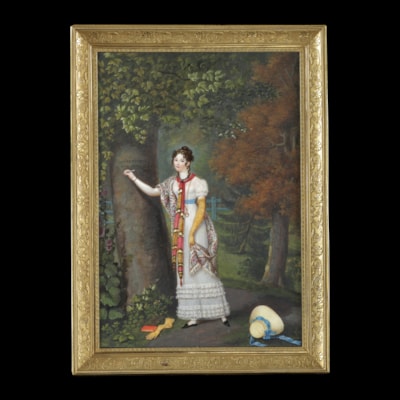HENRY BONE
(1755-1834)Portrait of Oliver Cromwell (1599-1638), facing to the right, wearing armour and a white lawn collar
1801
Enamel
Gilt-metal frame with stand
Oval, 88 mm (3 ¹/₂ inches) high
SOLD
Before beginning this process, Bone would draw a sketch of the portrait that he was copying, so that this could be transferred to the surface that he would then apply enamel to. A sketch of Cromwell by Bone in the National Portrait Gallery[3] allows us to date this miniature to circa 1801, and shows the marks of being transferred to the metal plate that the portrait now remains on. It can be distinguished from other copies of Cooper’s portrait of Cromwell by the fact that the armour only has two gold studs on the front of its shoulder plates, whereas the majority of other copies feature more.
These other copies of portraits of Cromwell by Cooper range in their style, and this is partially down to the fact that Cooper himself created multiple versions of this portrait. The two best-known were originally held in the Buccleuch collection[4], and the Harcourt family collection[5]. It is likely that Cooper copied the later Harcourt portrait from the earlier unfinished Buccleuch watercolour, and that Bone was then inspired by both of these.
[1] Walker, R, London, 1996, Henry Bone drawings in the National Portrait Gallery, p.19, no.135.
[2] Victoria and Albert Museum, Portrait miniatures painted in enamel, accessed 3rd April 2024 at https://www.vam.ac.uk/articles/portrait-miniatures .
[3] National Portrait Gallery, NPG D17603, https://www.npg.org.uk/collections/search/portrait/mw120418/Oliver-Cromwell?search=sp&sText=cromwell+bone&firstRun=true&OConly=true&rNo=0 .
[4] C. 1653, still in the Buccleuch collection, see https://blht.org/186-bowhill-091001-186-large-samuel-cooper/ .
[5] 1657, Now at Compton Verney, see https://www.comptonverney.org.uk/cv_collections/oliver-cromwell/ .
Frederick Joachim, Christies, London, 2nd May 1995, lot 185;
Private Collection, UK.

shipping notice
Worldwide shipping is included in all prices.
The Limner Company does not accept any responsibility for import duty, this is to be paid by the buyer.
Some stock items contain materials from endangered species which are governed by CITES regulations and will require a permit to export outside of Great Britain. If a certificate of export is required then this will be the responsibility of and paid for by the buyer .
you may also like













